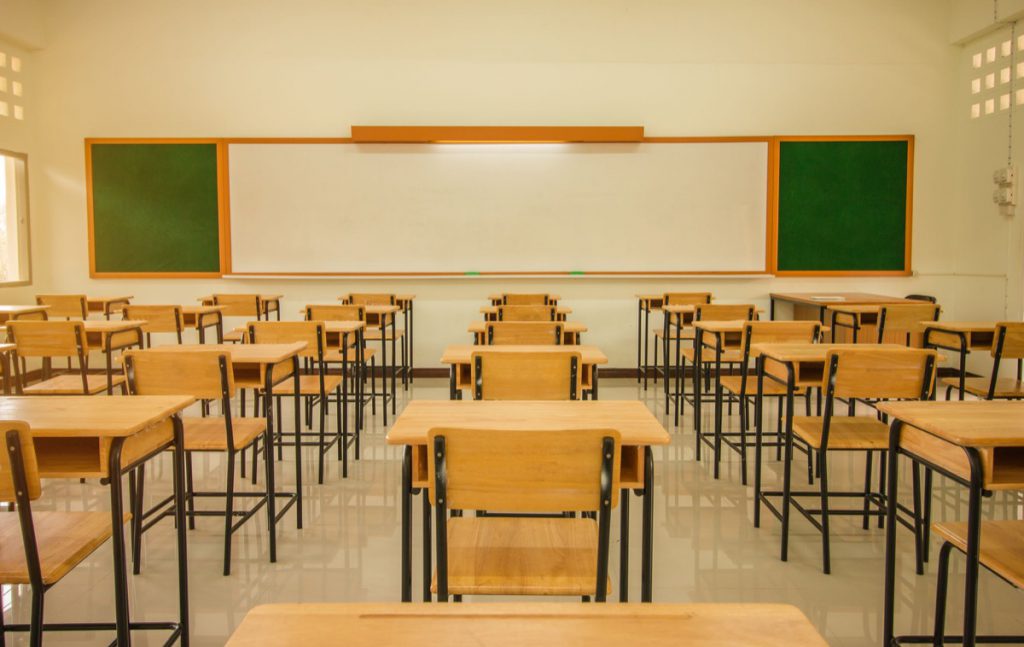How Teachers Unions Are Shaping the 2020-2021 School Year

Ken Green
CEO/Founder
UnionTrack
The start of the 2020-2021 school year is quickly approaching, but there are still unanswered questions about what school is going to look like when it is time for everyone to return to the classroom.
Some of the biggest school districts in the country have released tentative plans:
- The Los Angeles Unified School District, with a student population of a half million plus 75,000 staff, will not open classrooms for the schools year’s Aug. 18 start date. Instead, classes will all be remote.
- Public schools in New York City have proposed in-person classes between one and three days per week, though that proposal is awaiting sign-off by New York Gov. Andrew Cuomo. He plans to announce his decision in early August, just as the school year is set to begin.
“The only thing that’s certain right now is that we’re not certain,” says Wayne Lewis, former education commissioner in Kentucky and dean of the College of Education at Belmont University at Nashville. “It’s important to say that because as educators and educational leaders we need to wrap our heads around the reality that we don’t necessarily know what it’s going to look like.”
Through all this uncertainty, though, one thing is absolute: There will be significant changes in schools and learning. “With COVID-19, schools are rapidly changing the basic way they do their work,” writes Douglas Harris, senior fellow of governance studies at Brown Center on Education Policy. And unions are leading the conversations with other stakeholders about what those changes should look like.
“America is staring down a singular challenge that will require all of us to come together and negotiate a safe path forward,” says Randi Weingarten, president of the American Federation of Teachers (AFT).
Here are the key areas unions are addressing as school districts seek to define what going to school will look like this year.
Ensuring the Health and Safety of Everyone at School
The top priority is everyone’s safety and well-being. “A school building is not what you would call an ideal place in the middle of a pandemic,” says Michael Mulgrew, president of the United Federation of Teachers.
For students to return to the school building, Mulgrew says, the schools district must have a plan in place to keep students with COVID-19 from entering.
The Centers for Disease Control (CDC) is helping school districts tackle that plan with a school safety reopening guide. The AFT has also issued A Plan to Safely Reopen America’s Schools and Communities that outlines five tactics:
- Enforcing physical distancing until there is a decline in new cases for at least 14 consecutive days.
- Building infrastructure to test, trace and isolate new cases.
- Aligning public health tools that prevent the spread of the virus with education strategies that meet students’ needs.
- Engaging all stakeholders in the planning process for the return to school.
- Increasing investments in communities.
Some of the specific ideas the AFT, the National Education Association (NEA) and other organizations are considering would require
- everyone to wear face masks,
- staggering class times,
- taking everyone’s temperature when they arrive on campus,
- reducing classroom sizes,
- expanding classroom space,
- providing proper personal protective equipment,
- and raising the standards for cleaning in schools.
With these measures, and others that may be presented, unions and their allies are working to ensure that when the time does come to get back to school, everyone is as safe as possible. “You put all things on the table when it comes to student safety,” says Lily Eskelsen García, president of the National Education Association.

Defining Virtual Learning Amid the Chaos
School will not return to “normal” at the start of the 2020 school year. There is almost universal agreement on the necessity of incorporating virtual learning in order to meet the safety requirements necessary to ensure everyone’s health.
“Whenever schools welcome students back, the logistical and pedagogical challenges will be enormous, and simply re-creating the pre-shutdown norm will be neither possible nor desirable,” writes early childhood educator and author Erika Christakis.
The move to online learning has been a struggle, though. Remote teaching, for most schools, was uncharted territory that they were unexpectedly forced to navigate.
Teachers across the country say they failed to reach large numbers of students during the spring semester when the pandemic forced the closure of schools, Associated Press reporters Julie Watson and Carolyn Thompson write. Lack of devices and internet access, as well as the distractions of being at home, have made it difficult for teachers to connect with students and engage them in learning.
Unions Are Helping Schools Navigate Remote Learning
Unions give teachers a voice during these discussions.
Kevin Vick, vice president of the Colorado Education Association, says unions are important in helping to determine how to get everyone the resources they need to implement a new learning environment, as well as defining where and how virtual learning fits into lesson planning.
For example, Vick notes, teacher organizations in Colorado are pushing internet providers to “broaden the standards for installing broadband service” so students, regardless of income level or documentation status, can get the internet access they need to participate in remote learning.
Another issue unions are addressing around virtual learning is face-to-face live classrooms versus video lessons. Teachers’ time is already taxed, and the challenges of managing remote classrooms on top of lesson planning (not to mention managing their own lives under work-from-home orders) is burning many teachers out.
Unions, like United Teachers Los Angeles, are bargaining for flexibility in teachers’ workdays. “Tough as nails folks were saying to me, ‘I’m on the verge of tears here, because I have to choose between nap time and snuggles with my kids, and being with my class, whom I love also,’” says Cecily Myart-Cruz, the president of United Teachers Los Angeles.
These efforts, among others, are part of a greater movement by unions, allies, school districts, teachers, administrators and parents to ensure virtual learning efforts are inclusive of everyone’s needs.

Preparing Teachers for Virtual Teaching Through Professional Development
Teaching in a classroom is vastly different than teaching via video, and many teachers haven’t been properly trained to make the transition. But it’s going to fall on their shoulders to make it work. Professionals say this means teachers will need to be nimble about lesson planning and moving from in-person teaching to digital teaching, reports Lauren Camera, senior education writer for U.S. News & World Report.
Further, experts say teachers should have several days, weeks or months of in-depth training before moving to an online classroom, writes Caralee Adams, author at the Hechinger Report. But because the pandemic created an immediate rush to push learning online, teachers haven’t had access to the training they ideally need.
That’s why unions have tried to prioritize professional development and bargain for more support for teachers who are navigating virtual learning for the first time, writes Mary Ellen Flannery, senior writer and editor at the NEA.
For example, the Palo Alto Educators Association in California asked the school district to start school three days later in August so teachers could take that extra time to train on “topics including blended learning, flipped classrooms, Schoology and Google Classrooms.”
By bargaining for training time and for the right tools, unions are ensuring that students get the best education they can from the teachers they depend on, even if it’s outside of the traditional classroom.
As teachers unions continue to lead these conversations, they can use a tool like UnionTrack ENGAGE to communicate with members and get their input on what issues are most important for the upcoming school year.
Images by: Samorn Tarapan/©123RF.com, Uliya Lapkovkaya/©123RF.com, Jovan Mandic/©123RF.com







